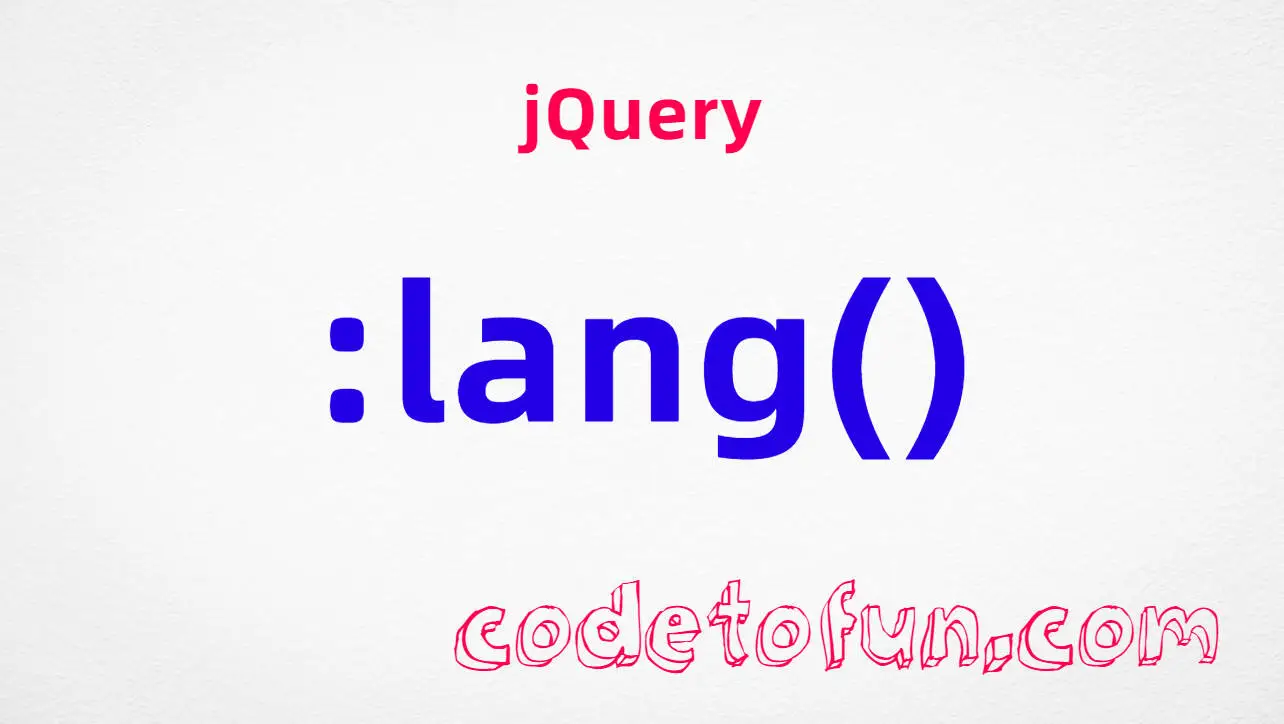
jQuery Selectors
jQuery :lang() Selector

Photo Credit to CodeToFun
🙋 Introduction
jQuery empowers web developers with a myriad of tools for enhancing user experience and interactivity on websites. Among these tools is the :lang() selector, which enables you to target elements based on their language attributes. Understanding and effectively utilizing the :lang() selector can significantly enrich your ability to create multilingual and localized web content.
In this guide, we'll explore the usage of the jQuery :lang() selector through comprehensive examples to facilitate your comprehension.
🧠 Understanding :lang() Selector
The :lang() selector is tailored to select elements based on their language attributes. It allows you to target specific language content within your HTML documents, facilitating dynamic manipulation and customization according to language preferences.
💡 Syntax
The syntax for the :lang() selector is straightforward:
$(":lang(language)")📝 Example
Selecting Elements by Language:
Suppose you have HTML content in multiple languages and you want to select elements written in a particular language. You can achieve this using the
:lang()selector as follows:index.htmlCopied<p lang="en">Hello, welcome to our website!</p> <p lang="fr">Bonjour, bienvenue sur notre site web !</p> <p lang="es">¡Hola, bienvenido a nuestro sitio web!</p>example.jsCopied$(":lang(fr)").css("font-weight", "bold");This will make the French text bold.
Applying Styling Based on Language:
You can dynamically apply CSS styles to elements based on their language attributes. For instance, let's change the font color of Spanish content:
index.htmlCopied<p lang="en">Hello, welcome to our website!</p> <p lang="fr">Bonjour, bienvenue sur notre site web !</p> <p lang="es">¡Hola, bienvenido a nuestro sitio web!</p>example.jsCopied$(":lang(es)").css("color", "blue");This will set the font color of Spanish text to blue.
Handling Events for Language-Specific Content:
You can also bind events to elements based on their language attributes. Here's an example where we alert a message when a French text is clicked:
index.htmlCopied<p lang="fr">Cliquez ici !</p>example.jsCopied$(":lang(fr)").click(function() { alert("Vous avez cliqué sur du texte en français !"); });Targeting Nested Elements by Language:
The
:lang()selector can also target nested elements within the selected language. For instance:index.htmlCopied<div lang="en"> <p>This is an English paragraph.</p> <div lang="fr"> <p>Ceci est un paragraphe en français.</p> </div> </div>example.jsCopied$(":lang(fr) p").css("font-style", "italic");This will italicize the French paragraph.
🎉 Conclusion
The jQuery :lang() selector provides a powerful mechanism for targeting and manipulating language-specific content within HTML documents. Whether you need to select elements, apply styling, handle events, or target nested content based on language attributes, this selector offers a versatile solution.
By mastering its usage, you can create dynamic and localized web experiences that cater to diverse language preferences with ease.
👨💻 Join our Community:
Author

For over eight years, I worked as a full-stack web developer. Now, I have chosen my profession as a full-time blogger at codetofun.com.
Buy me a coffee to make codetofun.com free for everyone.
Buy me a Coffee











